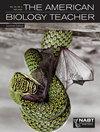Simplifying Biology Vocabulary via Morphology
IF 0.3
4区 教育学
Q4 BIOLOGY
引用次数: 0
Abstract
In all fields of biology, understanding technical terminology is a challenge for students. In many cases, this may distract them from focusing on fundamental processes and concepts. Across the biology subfields, much of the vernacular shares similar etymology and morphology. However, students lack the exposure necessary to identify these key features, which often explain the meaning of terms without requiring any context at all. Therefore, instead of encouraging students to memorize many terms independently, it could be more beneficial to show them how words are constructed. Here, I propose an activity designed to help students recognize terms that may be connected, understand how vocabulary is often constructed to reflect its idea, and develop comfortability using these terms themselves in discussions. Through a guided group activity, students will have a chance to break down terms they have previously encountered and to draw connections between novel words. If students are capable of relating words to each other before even knowing what they mean, they may learn more effectively. Without being intimidated by enigmatic vocabulary, they can focus on broader concepts. In addition, when students understand how biological terminology is constructed, they may even dissect new words without needing the context surrounding them. This activity is applicable to courses in any specialty of biology, as various molecules, tissues, and processes follow general naming principles.通过形态学简化生物学词汇
在生物学的所有领域,理解技术术语对学生来说都是一个挑战。在许多情况下,这可能会分散他们对基本过程和概念的关注。在生物学的各个子领域,许多方言都有相似的词源和形态。然而,学生缺乏必要的接触来识别这些关键特征,这些特征通常不需要任何上下文就能解释术语的含义。因此,与其鼓励学生独立记忆许多术语,不如向他们展示单词是如何构成的更有益。在这里,我提出了一个旨在帮助学生识别可能相关的术语的活动,理解词汇通常是如何构建以反映其思想的,并培养在讨论中使用这些术语本身的舒适感。通过有指导的小组活动,学生将有机会分解他们以前遇到过的术语,并在新单词之间建立联系。如果学生能够在知道单词的意思之前就把它们联系起来,他们可能会学得更有效。不用被神秘的词汇吓倒,他们可以专注于更广泛的概念。此外,当学生理解了生物术语是如何构成的,他们甚至可以在不需要上下文的情况下解剖新词。这个活动适用于任何生物学专业的课程,因为各种分子、组织和过程都遵循一般的命名原则。
本文章由计算机程序翻译,如有差异,请以英文原文为准。
求助全文
约1分钟内获得全文
求助全文
来源期刊

American Biology Teacher
BIOLOGY-EDUCATION, SCIENTIFIC DISCIPLINES
CiteScore
0.80
自引率
20.00%
发文量
108
期刊介绍:
The American Biology Teacher is an award winning and peer-refereed professional journal for K-16 biology teachers. Articles include topics such as modern biology content, biology teaching strategies for both the classroom and laboratory, field activities, and a wide range of assistance for application and professional development. Each issue features reviews of books, classroom technology products, and "Biology Today." Published 9 times a year, the journal also covers the social and ethical implications of biology and ways to incorporate such concerns into instructional programs.
 求助内容:
求助内容: 应助结果提醒方式:
应助结果提醒方式:


